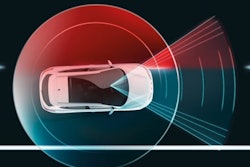Advancements in sensors, mobile networks and big data analytics are all undeniably accelerating the growth of new and exciting Internet of Things (IoT)-enabled business use cases and applications across industries. According to Gartner, more than half of major new business processes and systems will incorporate some element of IoT by 2020. From tracking products to inventory management, the supply chain is ready for its own IoT-led disruption — and the transformation is already well underway.
Customers may not see it at the checkout counter at Macy’s or during their online holiday shopping spree, but today’s supply chain — and workforce — are no longer the same. Even without considering the high demand around peak seasons, like Black Friday or Valentine’s Day, supply chain operations remain in flux due to human decision-making. Legacy technologies are approaching a breaking point and they must evolve to operate within the complex web of intricate, interwoven tasks that help bring goods and services to market.
While we’re still in the early days of IoT solving these challenges, organizations need to start mapping out the opportunities, barriers and strategies for moving forward now or risk being left behind by more agile, efficient and flexible competitors. From improved data capture and demand planning to leveraging data analytics, there are a number of use cases that are particularly exciting for the supply chain that can directly drive operational process improvements and cost savings:
- Manufacturing Maintenance - One area where supply chain IoT progress can be seen is within production facilities that integrate sensor networks into machinery to increase up-times, reduce operational cost and improve overall quality of service. IoT-driven solutions have the ability to aid the efforts of mobile and web applications to control real-time operations and visibility by collecting data like temperature and equipment malfunctions. Photographic instruments can now scan machine components, such as blades, to send alerts for predictive maintenance. Additionally, scanners can check raw materials for traits like paint color, alloy strength or fabric composition to confirm accuracy before they are used for a finished product.
- Inventory Forecasting - IoT data provides critical information to change the way manufacturing and distribution companies understand procurement operations. For instance, transit or retail stock levels can be closely monitored, as well as within 3PL distribution centers and warehouses, so that companies receive advance warning on any shipping errors to reduce data-entry errors and prolonged cycle times. The collection of data intelligence with pattern analysis over time enables accurate forecasting and intervention should faulty operations occur. As a result, inventory planners, production and procurement managers can be better informed and equipped for executive decision-making on materials to hold, build or buy.
- Asset Tracking - From manufacturing to production, IoT capabilities are no stranger to warehouses where new replenishment models help monitor inventory and stock levels for distribution. Take, for example, scales and visual sensors that alert workers of fulfillment needs on shelves, inside tanks or unused paper or metal on spools. IoT networks can also remove human error on handling inbound and outbound packages by weighing and scanning for deviations in weight, size, density or other parameters. Based on this data collection, shipping collaboration solutions can match expected versus actual received inventory against POs, ASNs and invoices to ensure accuracy and generate GRNs.
These examples demonstrate that the new wave of IoT technology — including its integration into the likes of virtual reality, predictive analytics, cloud, business intelligence, and demand planning — are changing the way supply chain operations interact with both customers and partners. IoT provides companies deeper supply chain visibility through a network that helps cut down on lost margins and prepare for expansion, both of which are critical to market success.
However, many companies have yet to integrate and/or replace existing legacy systems with new technology advancements. Common barriers to adoption include expertise, confidence or budget concerns. Additionally, a basic lack of understanding of security risks, scalability needs, cost and management requirements stand in the way of IoT-implementation. For example, a recent Accenture report found that 88 percent of manufacturing executives stated they are unprepared for the coming disruption to current operating models as a result of industrial IoT (IIoT). Eighty-four percent also stated that their workforce is not ready for the adoption of IIoT.
C-level buy-in and supply chain evangelist support will play a critical role in helping organizations figure out how to educate, adopt and drive cultural, technology and process change. Supply chain evangelists need to understand and be able to communicate across supply chain operations (and enterprise-wide) how new IoT-enabled capabilities can drive unprecedented benefits and help the organization better compete and grow on a greater, global scale.
Steve Rice is Director of Product Management at TAKE Supply Chain.























